It’s no secret that scheduled backups are the best way to protect your database from disaster. In this article, we are going to explain, which database backup software is used for different database systems.
SQL Server Database Backup Software
SQL Server is a very popular relational database management system developed by Microsoft. Currently, there are more than ten different editions of Microsoft SQL Server.
The sqlcmd utility lets you execute Transact-SQL statements, system procedures, and script files at the command prompt. So you can start SQL Server backup from the command line by simply using the following command:
sqlcmd -E -S <server_name> -d master -Q "BACKUP DATABASE <database_name> TO DISK = N'<backup_file_name>' WITH INIT , NOUNLOAD , NAME = N'my_backup', NOSKIP , STATS = 10, NOFORMAT"
However, if you need to create, zip, and encrypt backups periodically, and then get an email notification, then we recommend you to use third-party database backup software like SQLBackupAndFTP utility that will do all that for you. All you need is to go through several simple steps to get started with SQLBackupAndFTP:
- Download and install the database backup software
- Open and connect to SQL Server
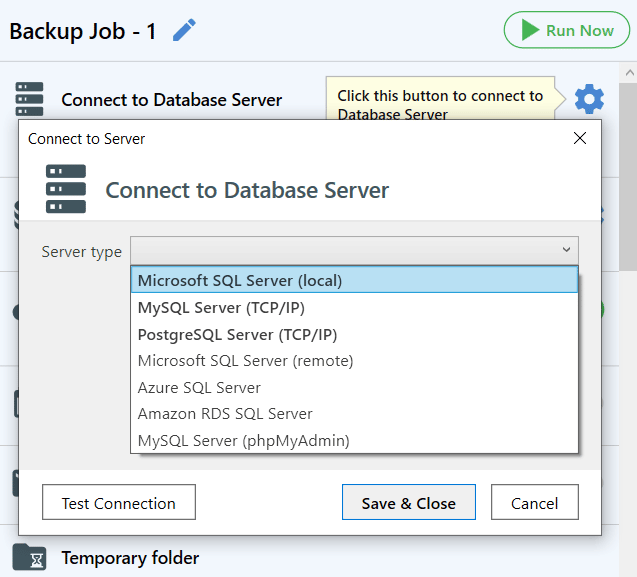
- Choose the database that you want to backup
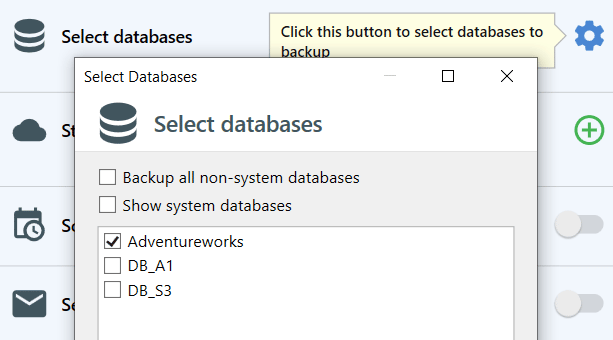
- Add the destination places, where you’d like to keep your backups
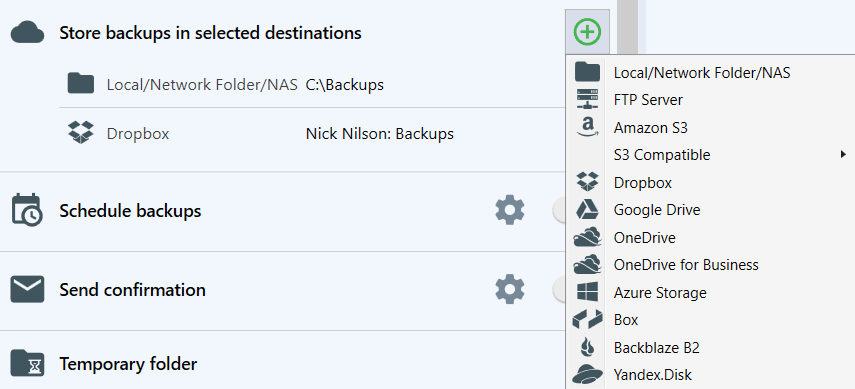
- Set up a scheduled backup

MySQL Database Backup Software
MySQL Server is an open-source relational database management system (RDBMS). MySQL is often used in web applications and is a crucial component of the widely used LAMP open-source web application software stack.
Usually, MySQL performs backups with the help of mysqldump database backup software. You can use it in command just like shown below:
mysqldump -u <username> -p<password> <databasename> > filename.sql
This will create a SQL-script, execution of which will restore your database.
But again, the most comfortable way to make scheduled backups is to use third-party tools like SQLBackupAndFTP. In fact, SQLBackupAndFTP internally uses mysqldump as a backup engine. Here’s a quick tutorial on how to start working with it:
- Download and install SQLBackupAndFTP
- Open the utility and connect to MySQL Server. Please note that you can connect either to MySQL Server itself or via phpMyAdmin, which is often more convenient if you backup your database from the remote machine.
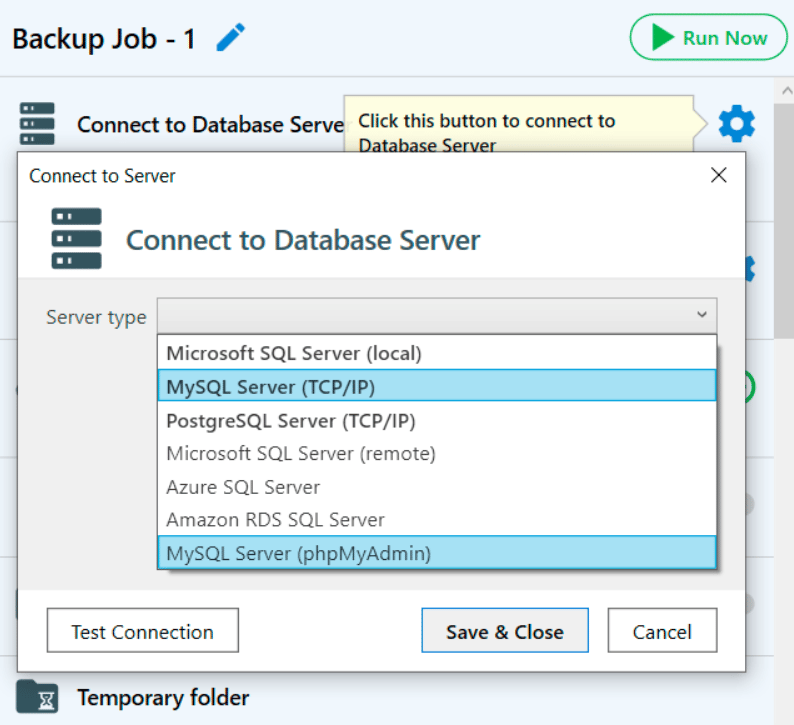
- Tick off the database that you want to backup from the list

- Choose the destination places where all the backups will be stored

- Set up scheduled backups

PostgreSQL Database Backup Software
PostgreSQL (often users call it simply Postgres) is an object-relational database management system (ORDBMS) with an emphasis on extensibility and standards-compliance. PostgreSQL is cross-platform and runs on many operating systems including Linux, FreeBSD, OS X, Solaris, and Microsoft Windows.
PostgreSQL uses the pg_dump utility to make database backups. It makes consistent backups even if the database is being used concurrently. You can backup your Postgres database using the following command:
pg_dump -U <username> -W -F t <database_name> > backup_file.tar
While it’s quite simple, it doesn’t allow you to make backups regularly. Like in the case of previous database backup software there is a more convenient tool for creating PostgreSQL backups. That is SQLBackupAndFTP. It also uses pg_dump internally but makes your life a lot easier and includes tons of useful features.
To start using it just follow a few simple steps:
- Download and install SQLBackupAndFTP
- Open and connect it to PostgresSQL Server
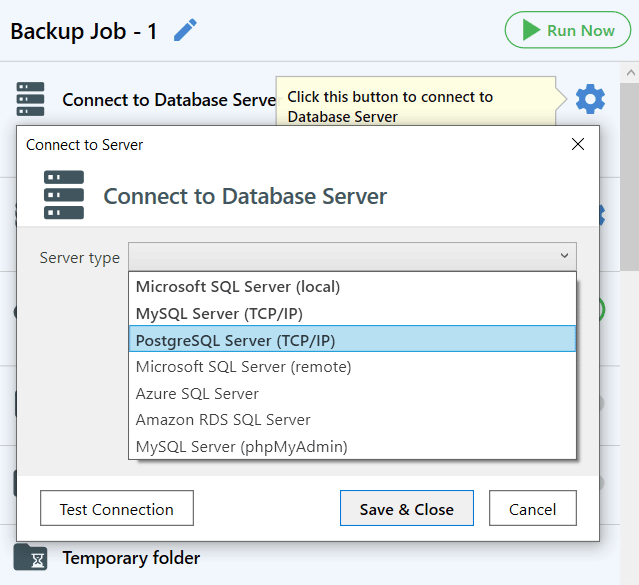
- Tick off the databases you would like to backup from the list

- Select the destination places for storing the backups

- Set up a backup job schedule

With the help of this utility, you can create scheduled backups for the above DBMSs.
